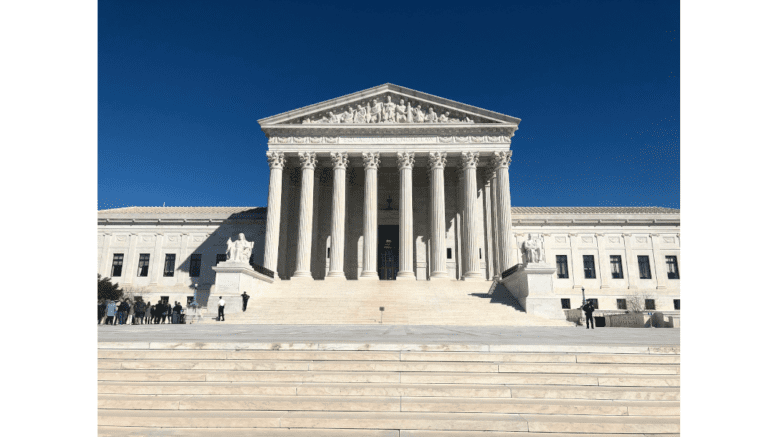by Stanley Dunlap, Georgia Recorder [This article first appeared in the Georgia Recorder, republished with permission]
January 8, 2023
A landmark U.S. Supreme Court case could have significant ripple effects on the government’s ability to protect the nation’s waterways.
The court is expected to decide the battle over property rights and environmental regulations in the coming months in a longstanding lawsuit involving the U.S. Environmental Protection Agency fining an Idaho couple for not getting a permit before starting to build a home on protected wetlands. The 2007 case could result in further changes to the federal Clean Water Act, which has recently been revised with regulations that environmentalists praise for returning protections to millions of acres.
President Joe Biden’s administration rewrote the navigable water rule in late December to align more closely with the standard in place for several decades before it was broadened under the Obama administration in 2015. Several years later, President Donald Trump’s administration greatly reduced enforcement. This resulted in exempting hundreds of projects from federal Army Corps of Engineers approval, including Twin Pines Minerals’ mining plans several miles from the Okefenokee, the country’s largest blackwater swamp.
Kelly Moser, senior attorney with the Southern Environmental Law Center, said it’s a pivotal time as court cases and government regulations will determine the extent to which families and communities have access to clean water.
In the wake of the Supreme Court justice’s decision, Moser said, more revisions might be needed to the Clean Water Act, which is designed to allow the federal government to protect the chemical, physical, and biological integrity of the nation’s waterways.
The “navigable” waters law covers wetlands and streams located near larger waterways. The revised law includes some exclusions for certain types of property and also redefines how to determine the proximity of a smaller wetland to a larger body of water before triggering a full federal review.
“We’re optimistic that the Supreme Court will recognize the importance of protecting our nation’s waters,” Moser said. “We all know that our most vulnerable communities are the ones that bear the unfair burden of water pollution. Every family and community deserves to have safe, swimmable, fishable and drinkable water. And that’s what’s at stake with this (Supreme Court) court case.”
A Farm Bureau Federation is among the organizations that will closely monitor the Supreme Court’s decision.
The agricultural lobbying group said that the new guidelines create unnecessary hoops for farmers and ranchers to jump through and put them at risk for large fines or criminal penalties. As a result of the rule, water in ditches and drains could be regulated federally, which could slow down simple farming tasks like planting and plowing, the farm lobby says.
“This rule allows the federal government to expand their jurisdictional reach over private property,” said Courtney Briggs, senior director of government affairs for the Farm Bureau Federation. “It is clear that the agencies have doubled down on their use of the troubling significant nexus test, which will require landowners to hire environmental consultants, attorneys and engineers to ensure that they are in compliance.”
Fate of Okefenokee mining plans unclear
In its own federal court litigation, the Southern Environmental Law Center claims the Corps illegally removed its jurisdiction last year by ceasing to consult with the Muscogee Creek Nation about the mining project that they say could disrupt native burial grounds.
Because the Twin Pines mine proposal is still governed by Trump-era policies, a state permit is still pending for plans to dig for titanium dioxide along 582-acres located three miles from the wildlife refuge. In light of the EPA’s revisions, the Army Corps would likely have to approve future mining expansions near the Okefenokee. Twin Pines has said the 600-acre mine is a demonstration project for a dig that could be significantly expanded after the initial work.
Moser said her organization is optimistic that the rollback of a Trump rule that the EPA concluded was unlawful strengthens its fight to restore federal jurisdiction over a mining project that threatens the habitat of endangered animals, 600 plant species and is a National Park Service destination that draws upwards of 600,000 visitors a year.
Twin Pines has downsized the mining demonstration site after unveiling plans in 2019 to mine on more than 2,000 acres with the potential to expand to 12,000 acres.
“If we win our case, the Clean Water Act protections could be unequivocally restored to the wetlands adjacent to the swamp that a (federal water) permit would be required,” she said.
Georgia Recorder is part of States Newsroom, a network of news bureaus supported by grants and a coalition of donors as a 501c(3) public charity. Georgia Recorder maintains editorial independence. Contact Editor John McCosh for questions: info@georgiarecorder.com. Follow Georgia Recorder on Facebook and Twitter.
